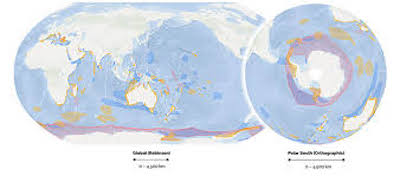Whales and dolphins are vital to healthy seas. We have excellent reasons – both moral and practical – to ensure their continued existence in high numbers. So how do we best guarantee that they will have what they need to continue to thrive? There are a great many issues we need to address, of course, but a new tool has emerged in recent years which could prove enormously helpful to this enterprise.
Since 2016, scientists representing nations from around the world have been meeting to conduct “Important Marine Mammal Area workshops”. By this time they’ve identified and mapped a number of key habitats – in places like the Mediterranean Sea, the South Pacific, the Indian Ocean, and the waters around Antarctica. Recommendations are submitted to an independent review panel that then decides if they can be taken forward. The plan is to have those that are approved promoted by the scientific community, who will begin talking to policy makers at every level, including internationally. The result, we hope, will be legal protections for these important areas of the ocean and the species who live there.
These ‘Important Marine Mammal Areas’ (IMMAs) are modeled after earlier work done on ‘Important Bird and Biodiversity Areas’ (IBAs), a concept which has worked well for several years now. Until recently what had been missing, when it came to whale and other marine mammal habitats, is that much of the data was unpublished and largely scattered, making it harder to present a coherent picture. Scientists behind IMMAs believe that they’ve now managed to build a “robust biocentric product that is based on expert assessments of existing data”. (Biocentric means that it focuses on the needs of the living elements within those particular habitats.) In this way, they’ve been able to identify which specific habitats are most crucial to a number of marine mammal populations.
This is the kind of rigorous, fact-based work that can make a real difference to the security and wellbeing of cetacean populations around the world. It’s the best we can do, given our current knowledge, to make informed guesses about the most advantageous locations for whales to feed, socialize, and raise their calves. For scientists and marine mammal advocates alike, IMMAs are the best available answer to the question of where best to focus our efforts at ocean conservation and protection.
OK, so having come this far, what’s next? Or in other words, how can these IMMAs be used? The creators of this concept define them as ‘discrete portions of habitat, important to marine mammal species, that have the potential to be delineated and managed for conservation’. So whether we formally protect them or not is yet to be decided. If we’re serious about promoting conservation, I certainly hope we do. But beyond that, there are a number of benefits that can be gained from the establishment of IMMAs. Here’s a sampling, though far from comprehensive list…
Industry can use them to determine where their operations and activities overlap with important habitats, and use IMMA guidelines to help them prevent or reduce impact. They can also consider funding research, sharing data, or helping to monitor marine mammal populations in the areas in which they operate.
NGOs can raise awareness among industry, government and the general public about the importance of monitoring and protecting species within the IMMA, or they can fund and implement these programs themselves.
Research Organizations will use IMMA boundaries to guide decisions on where to focus research and conservation efforts, and to perform analysis of trends or threats to populations in the area. The IMMA network should prove especially useful to further understanding of the “ecological coherence and connectivity” of habitats. We know, for example, that human activities have an enormous impact on transitory pathways used by migratory species (which many whales are) as their lifecycles move them between their distinct habitats.
Governments and their agencies can develop monitoring programs for IMMAs to help ensure they aren’t degraded by tanker traffic, commercial fishing or oil exploration and drilling. They can legislate that necessary precautions are taken for any activities within the designated area that may impact the habitat, and ensure that policy reflects the assessments of scientists with knowledge of marine mammal conservation needs. And, of course, we hope that governments will consider designating IMMAs in their waters as Marine Protected Areas. (Then to follow up in ensuring that they are treated as such – not always the case.)
For members of the general public, it’s our opportunity to act as proud, local stewards for the populations in our local waters, and to ensure that the activities of local tourists don’t negatively impact them. We should see ourselves as the hosts of our local IMMA and be appropriately protective. And when we ourselves are tourists in another part of the world, we can be aware of the need to act responsibly, knowing that we’re visiting an area so-designated.
Now is an ideal time to seize some momentum for these all-important IMMAs. The health crisis we’ve all gone through for the last couple of years highlights the need to do a better job of learning to live with nature. To respect the fact that wildlife depends on us, as we depend on them. We’ve also become much more alert to the value healthy whale populations bring to the fight against climate change.
I believe that the public is now beginning to appreciate the extent of the damage being done to our oceans by the fishing industry – especially with the release of documentaries like Netflix’s Seaspiracy and National Geographic’s Trafficked. Many of us now realize that it’s with a much higher level of urgency that we need to address overfishing, the damage done by discarded fishing gear, and the depletion of biodiversity in our marine ecosystems.
We need to develop the tools that will help us combat the climate emergency, build circular economies, and learn to live high-quality lives that keep us operating within our planet’s boundaries. It’s become obvious to anyone who cares to look that our own health and wellbeing is entirely linked to, and dependent on, the health of our environment. The oceans are a fundamental part of that, and IMMAs are an example of an approach that can really help.
Lastly, two fundamental facts support the case for the establishment of IMMAs.
- We need to listen to science and to inform our decisions with facts. The laws that govern the natural world don’t care about our wishes, or our politics. When a number of scientists develop a ‘credible body of evidence’ for something, as they’ve done here, we ought to take notice.
- We are all connected. Our actions affect everyone and everything around us. And none of us is safe until all of us are. We protect ourselves by protecting one another. We need whales and dolphins in our seas, and right now they in turn really need our help.
Important Marine Mammal Areas are a great example of potential global co-operation. Informed by science and international collaboration, they can be a significant contributor to healthy ocean ecosystems. Good for whales and dolphins most certainly. But also good for all of us.
For The Orca’s Voice,
Dakota, Canadian Cetacean Alliance



Leave a Reply